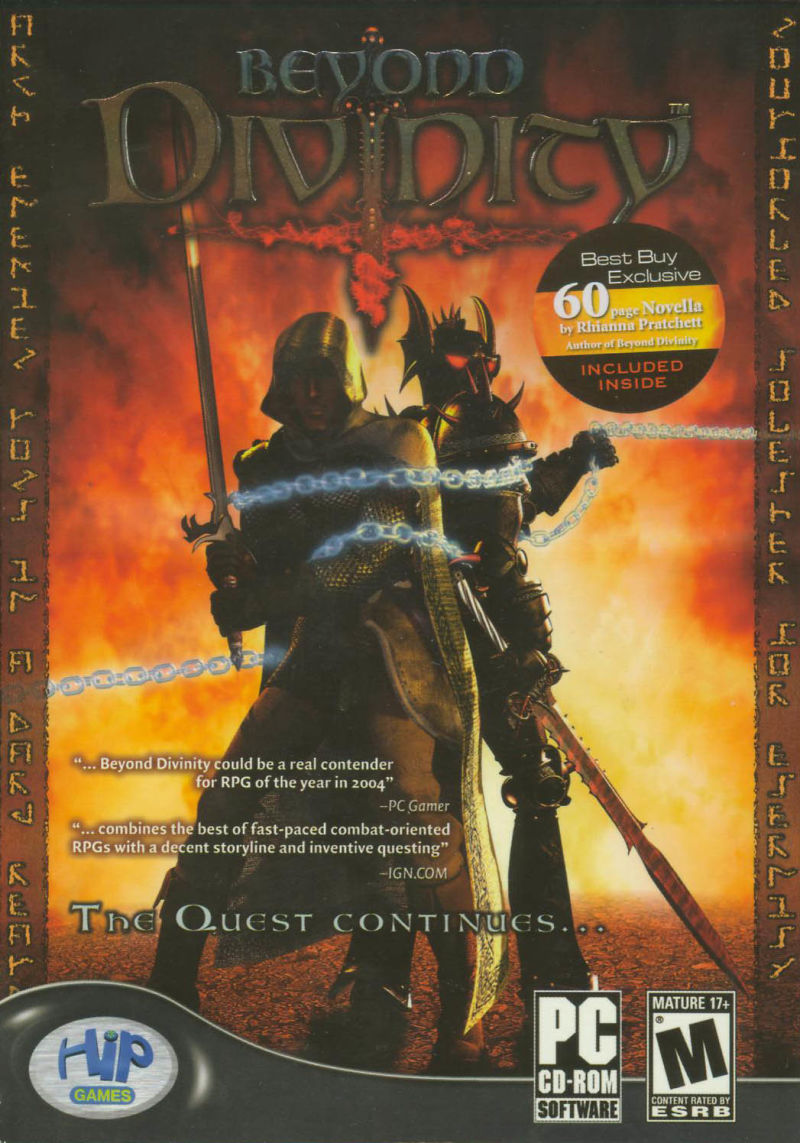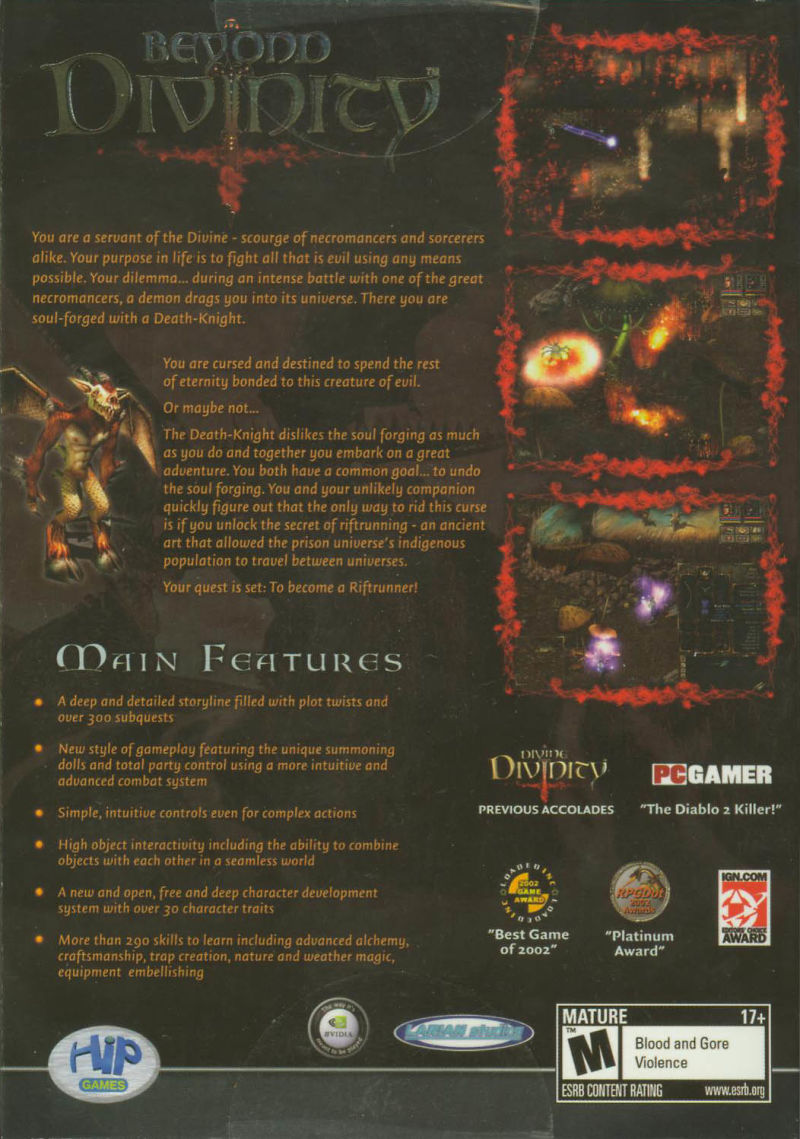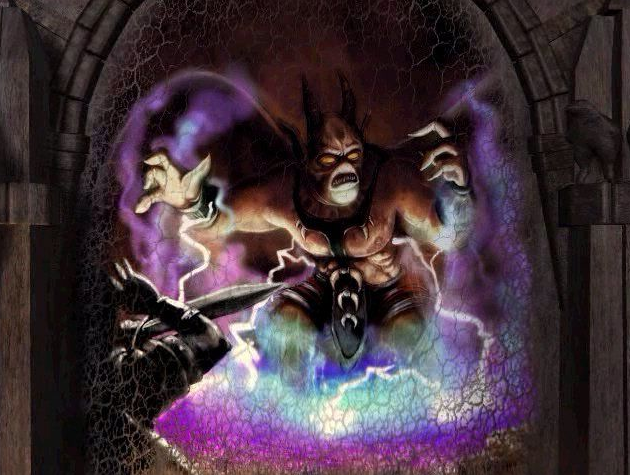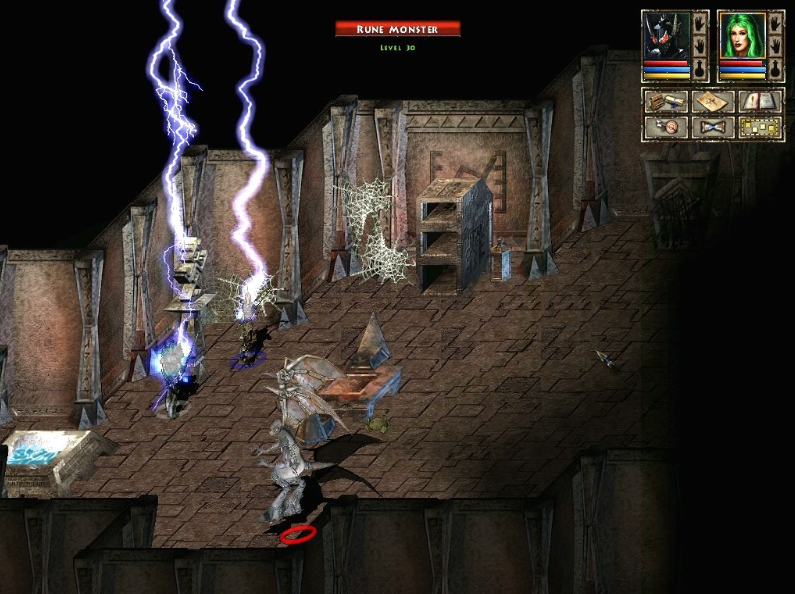When Lucian the Divine defeated the evil organization known as the Black Ring, he was late to prevent a dark ritual from happening: the soul of the Lord of Chaos was summoned into the body of an innocent boy. Unable to slay the boy, Lucian adopted him and raised him as his own son, naming him Damian. When Damian was fifteen, a young witch called Ygerna seduced him and taught him the ways of magic, hoping to unlock the evil powers contained within him. Lucian killed Ygerna with his own hand, and Damian was unable to forgive him. In order to stop him from unleashing his wrath on the world, Lucian had to seal Damian’s memories and prevent him from returning to Rivellon.
A few years later, a group of paladins of the Divine order was fighting a powerful necromancer from the Black Ring. The necromancer summoned a demon called Samuel, who killed all the paladins but one. The survivor was imprisoned, awaiting torture, when a mysterious armor-clad creature calling himself the Death Knight appeared in his cell. Death Knight told the paladin that Samuel soul-forged them together, apparently as a punishment for something he did. The two must first escape the prison and eventually find a way to break the soul-forging.
Beyond Divinity is a role-playing game and a follow-up to Divine Divinity, its events taking place twenty years after those described in the predecessor. Most locations and characters are different, but over the course of the game the connection to the overarching plot becomes revealed. The game plays out in four Acts over a vast territory. The player begins in a large dungeon-like jail area and progresses out into a more open landscape (once escaping the prison), eventually exploring an imp village, monster-infested forests, atmospheres of fire and ice as well as numerous mysterious islands on the journey. Unlike Divine, there is no open world gameplay, and the game advances in a comparatively linear fashion.
There is a variety of non-player characters including friendlies and monsters of various types. Many sub-quests can be discovered by interacting with the NPCs, many of which are optional. In addition to the main game questing, there are separate “battlefield” areas within each Act that have nothing to do with the main plot but are accessed by finding special keys in the main game. Intended to help the player increase the skills of the two controlled characters, these accessory areas have more quests, multi-leveled dungeons as well as merchants and special objects that cannot be found anywhere else.
The game is both keyboard and mouse controlled and is played out entirely in third person, isometric perspective, with 2D backgrounds and 3D character models. The main protagonist can be male or female and there is a choice of several classes chosen during the character generation process. The Death Knight is controlled in the same manner as any other party member. Like the main character, he can be provided with equipment and direction while exploring and battling. He can carry just as much (sometimes more) inventory and has his own abilities and skills, which can be upgraded and customized freely.
Beyond Divinity uses the same basic engine as the previous game, but its combat is real-time rather than action-based. The player does not physically controls the attacks, but targets enemies and lets the battle evolve automatically. Combat can be paused at any time to issue commands to the two controllable characters. Like in the previous game, characters can learn any skills divided into Warrior, Survivor, and Wizard categories. Each of these consists of disciplines, ranging from weapon proficiencies and spells to sneaking, repairing, and others. Finally, the skill itself may often be learned in various ways (e.g. the player can opt to increase damage or accuracy of two-handed slashing weapons, etc.). In addition, the player can learn to summon dolls that act like party members. Many skills can only be learned when trained by a specific NPC.
Cover Art:
Screenshots:





